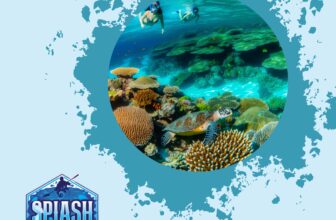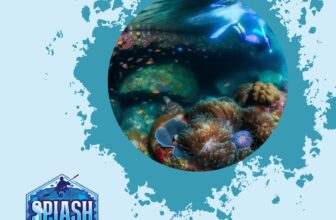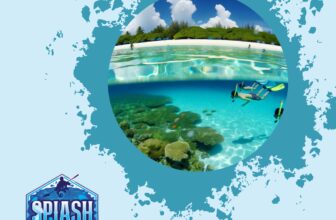
California is a scuba diver’s paradise, with a long coastline stretching over 840 miles and a wide range of marine habitats. From giant kelp forests to deep sea canyons to shipwreck sites, there are plenty of underwater attractions for divers to explore. For those who love the ocean and have an adventurous spirit, scuba diving in California is a must.
One of the most popular scuba diving spots in California is Catalina Island. Located just off the coast of Los Angeles, it boasts crystal clear waters and diverse marine life.
Here you’ll find brightly colored fish, playful sea lions, and even the occasional shark sighting. The island offers dive sites for divers of all levels, from shallow reefs to deeper dives where you can explore sunken ships.
Another great location for scuba diving in California is La Jolla Cove, which is known for its kelp forests and sea caves. These underwater forests provide shelter for an array of sea life such as crabs, lobsters and octopuses while the caves offer some unique underwater scenery that few other places can match.
Monterey Bay is also a hotspot for divers seeking shipwrecks and deep sea canyons that provide spectacular sightings such as many species of whales including Orca sightings throughout January until March each year. The bay’s rich history makes it a haven for wreck diving enthusiasts.
Scuba diving in California offers some incredible opportunities to explore the underwater world filled with colourful creatures both large and small that cannot be seen elsewhere on land or air – only under water! With so many amazing locations throughout the state boasting unique dive sites that cater to divers at every skill level imaginable – from beginners all the way up through experts – it’s easy to see why so many people choose to come here for their next scuba adventure!
Best Scuba Diving Spots in California
Catalina Island: Crystal Clear Waters and Diverse Marine Life
Catalina Island, located just off the coast of Southern California, is known for its crystal clear waters and diverse marine life. The island offers a variety of dive sites suitable for all levels of diving experience. From shallow reefs to deep walls, there is something for everyone at Catalina.
One of the most popular dive sites at Catalina is the Casino Point Underwater Park. This park offers a shallow reef with easy entry and exit points.
The reef is home to an abundance of colorful fish and other marine life, including sea stars, octopuses, and kelp forests. Another popular dive site at Catalina is the Farnsworth Bank.
This site offers a deeper dive with an average depth of 60-70 feet. The bank features large boulders, canyons, and crevices that are home to a variety of marine life including lobster, sheephead, and garibaldi.
La Jolla Cove: Kelp Forests and Sea Caves
La Jolla Cove in San Diego is known for its beautiful kelp forests and sea caves. The cove can be accessed from shore or by boat.
There are several dive sites in La Jolla Cove suitable for all levels of diving experience. One of the most popular sites in La Jolla Cove is the Seven La Jolla Caves.
These caves are accessible by boat only and offer a unique diving experience with walls covered in colorful sponges and anemones. For those looking for something more challenging, the Canyon Dive at La Jolla Shores offers depths up to 90 feet with beautiful rock formations and an abundance of marine life including horn sharks, octopuses, rays, eels, lobsters, and more.
Monterey Bay: Shipwrecks and Deep Sea Canyons
Monterey Bay is located on the central coast of California and is known for its shipwrecks and deep sea canyons. The bay offers a variety of dive sites suitable for all levels of diving experience.
One of the most popular dive sites in Monterey Bay is the Breakwater. This site offers shallow diving with easy entry and exit points.
The site is home to several shipwrecks, including the USS Macon, a naval airship that crashed in 1935. For those looking for something more challenging, Point Lobos State Reserve offers depths up to 130 feet with stunning rock formations, kelp forests, and an abundance of marine life including sea lions, harbor seals, otters, and more.
Channel Islands National Park: Untouched Natural Beauty and Rare Species Sightings
Channel Islands National Park is located off the coast of Southern California and is known for its untouched natural beauty and rare species sightings. The park offers a variety of dive sites suitable for all levels of diving experience.
One of the most popular dive sites at Channel Islands National Park is Anacapa Island. This site offers shallow diving with an abundance of colorful fish, kelp forests, and sea caves to explore.
For those looking for something more challenging, Santa Cruz Island offers depths up to 100 feet with stunning walls covered in colorful sponges and anemones. This site also offers rare sightings such as giant black sea bass, wolf eels, bat rays, and even blue whales during their migration season.
Tips for Scuba Diving in California
Best time to go diving
When it comes to scuba diving in California, the best time to go depends on the location and the conditions. Generally, the summer months are the most popular for diving because of warmer water temperatures and better visibility.
However, some areas like Monterey Bay have better conditions during the fall months when there is less kelp and clearer water. It is important to check local weather and water conditions before planning your dive.
Strong winds or rough seas can make diving unsafe or uncomfortable. Additionally, certain marine life like great white sharks are more active during certain times of year, so it’s important to be aware of any potential hazards.
What to wear
Wearing the proper attire while scuba diving is essential for your safety and comfort. A wetsuit is necessary for California diving due to colder water temperatures. A full wetsuit made from neoprene is recommended as it provides better insulation against cold water.
It’s also important to wear appropriate accessories such as booties and gloves. These will protect your extremities from getting too cold or injured while navigating rocky terrain or handling dive gear.
Make sure you have a properly fitting mask that provides a comfortable seal around your face. This will allow for better visibility underwater and prevent leaks that can ruin your dive experience.
Equipment needed
Aside from basic equipment like a regulator, BCD, fins, and tank – there are other specialized pieces of gear that may be necessary depending on where you’re diving in California. A dive light may be necessary if you plan on exploring caves or wrecks where there isn’t much natural light penetration.
Additionally, a compass or GPS device can help with navigation if you’re unfamiliar with a specific area. Dive computers are also becoming increasingly popular as they provide real-time information on your depth, time, and remaining air supply.
This helps you stay safe and aware of your surroundings while diving. Overall, make sure to do your research on the specific location you plan on diving in to determine what equipment is necessary for a safe and enjoyable experience.
Marine Life You Can Expect to See
California is home to a diverse array of marine life, making it a top destination for scuba divers. One of the most iconic features of California’s underwater world is its vast kelp forests. These towering underwater forests provide a habitat for countless species of fish, invertebrates, and mammals.
Kelp Forests and Their Inhabitants
The giant kelp that grows along California’s coastlines can reach up to 100 feet in length! These towering plants provide shelter and food for an incredible array of marine life.
Some of the common creatures you might spot while diving in these forests include Garibaldi (the state fish of California), sea stars, octopuses, and various species of rockfish. In addition to these creatures, many species of sharks also inhabit these kelp forests.
Kelp sharks are one common variety known for their distinctive long snout. Other shark species found here include leopard sharks and horn sharks.
Sharks: Leopard Sharks, Horn Sharks & Great Whites
While many people have an understandable fear or fascination with sharks, they are actually much less dangerous than Hollywood would have you believe! In fact, most shark species native to California are completely harmless to humans.
One such example is the leopard shark. As their name suggests, these sharks feature spots on their skin that closely resemble those found on leopards.
They typically grow up to 6 feet in length and can often be seen swimming among kelp fronds or hiding under rocks. In contrast to the docile nature of leopard sharks, great white sharks are often feared by swimmers due to their perceived danger level.
However, reports show that only about 10% of great white attacks result in fatalities, and the sharks are actually crucial to maintaining a healthy ocean ecosystem through their role as top predators. While great whites are relatively rare in California, they can occasionally be spotted off the coast.
Octopuses, Eels, & Other Unique Creatures
If you’re looking for something a bit quirkier than kelp forests and sharks, California’s waters have plenty of unique creatures to offer. One of the most fascinating is the octopus – these intelligent animals can change color and texture in order to blend into their surroundings or ward off predators.
Another highlight of diving in California is spotting some of the many species of eels that call these waters home. From leopard eels to giant moray eels, there are plenty of varieties to see up close.
Other unique creatures you might spot during a dive include sea jellies (such as moon jellies), sea urchins, and various species of crabs and lobsters. Even if you think you’ve seen everything there is to see under the water’s surface, California has plenty more surprises in store!
Rules & Regulations for Scuba Diving in California
Scuba diving is a fantastic way to explore the underwater world and marvel at the wonders of Mother Nature. However, it is important to follow rules and regulations to ensure the safety of divers and protect marine life. Before diving in California, there are a few things you need to know.
Permits Required for Certain Areas
Some areas require permits to scuba dive. For example, if you want to dive at La Jolla Cove, you need a permit from the San Diego Lifeguards. The permit costs $10 per person and can be obtained online or in person at certain locations.
Catalina Island is another popular destination that requires permits for scuba diving. You can obtain these permits from the Catalina Island Conservancy website or office.
It’s important to note that some areas may have limited access or seasonal closures due to conservation efforts or safety concerns. Always check with local authorities before planning your dive.
Protected Species You Cannot Touch or Disturb
California has strict regulations when it comes to protecting its marine life. Many species are protected under state and federal laws, meaning they cannot be touched or disturbed in any way while scuba diving. Some of these species include sea otters, sea turtles, whales, dolphins, and seals.
It is crucial that divers respect wildlife and refrain from touching or feeding them during their dive. Harassing marine life not only disrupts their natural behavior but could also result in serious injury for both divers and animals.
Following rules and regulations ensures safe scuba diving experiences while minimizing negative impacts on fragile ecosystems. Make sure to obtain necessary permits and avoid disturbing protected marine species during your dives in California’s beautiful waters!
Conclusion
California has a plethora of world-class scuba diving spots, but the four mentioned in this article are some of the best. Catalina Island offers crystal clear waters and a diverse array of marine life in a location that’s easily accessible from Los Angeles. La Jolla Cove is home to kelp forests and sea caves, making it one of the most unique diving spots in California.
Monterey Bay is known for its shipwrecks and deep sea canyons, offering both history and adventure. Channel Islands National Park showcases untouched natural beauty and rare species sightings that you won’t find anywhere else.
California offers great scuba diving opportunities year-round but there are certain times that are better than others to go diving. Generally, the best time to go scuba diving on the West Coast is during the summer months when water temperatures are warmer. You should always wear a wetsuit when scuba diving in California and make sure all your equipment is up-to-date before heading out into the water.
While it’s important to enjoy your dive experience, it’s equally important to protect the marine life around you. Certain species such as sea urchins and abalone are protected by law, so make sure not to touch or disturb them during your dive.
Additionally, some areas may require permits before you can dive there so be sure to check ahead of time. Whether you’re looking for adventure or simply want to explore underwater worlds full of unique marine life, California has something for everyone when it comes to scuba diving.
By following these tips and visiting these top spots mentioned above, you’ll be sure to have an unforgettable diving experience in the Golden State. So, get your gear ready and dive into California’s underwater paradise!







